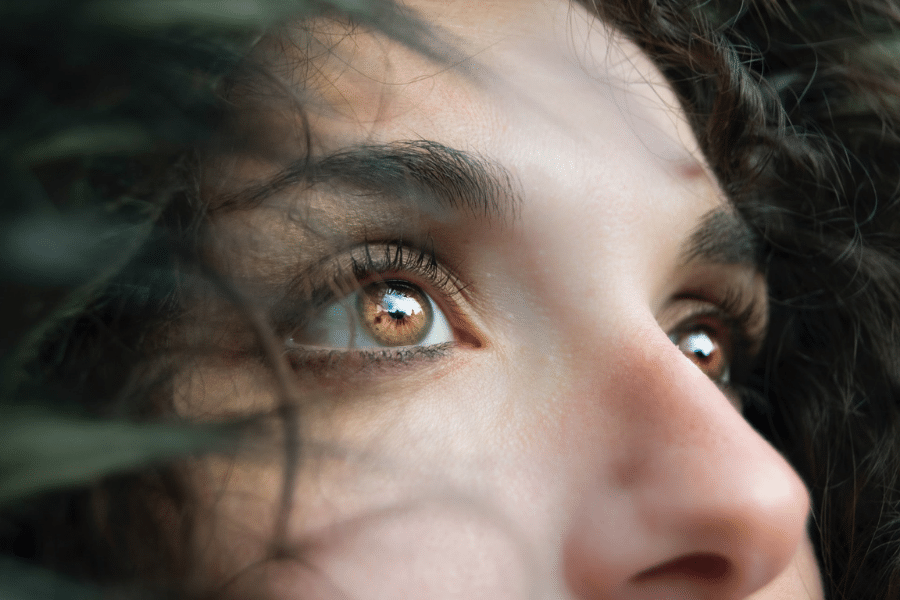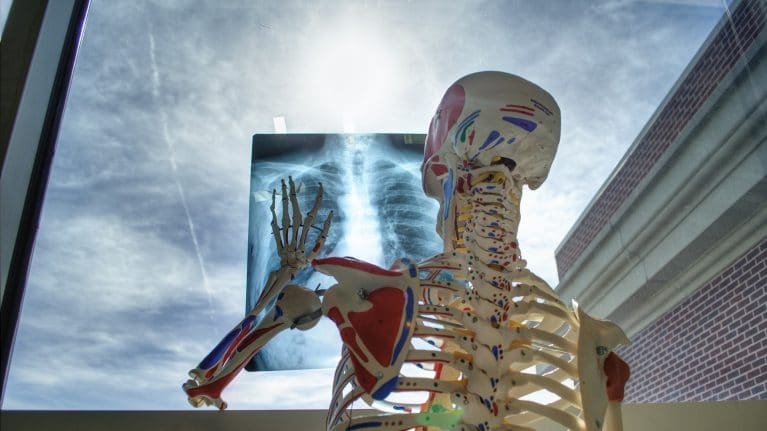22 Astonishing Phobia Statistics for 2024

We’ve prepared some phobia statistics that might come in handy if you want to learn more about these anxiety disorders. Everyone is afraid of something. That fear is sometimes rational, but in some situations, we can experience a deep sense of panic.
Below you can find some interesting statistics related to different types of phobias. Let’s take a look.
Top 10 Phobia Facts and Statistics
- About 40% of the general population has a fear of flying.
- Between 5% and 10% of the global population have a specific phobia.
- About 12.5% of the US adult population experienced a specific phobia at some point.
- The lifetime prevalence of specific phobias across the world is between 3%–15%.
- Statistics on phobias show that glossophobia affects about 73% of the US population.
- Between 2%–5% of the US population had a fear of failure in 2015.
- Nearly 8.7% of the US population had specific phobias in 2020.
- Around 36% of young adults met the criteria for social anxiety disorder in 2020.
- Almost 60% of the people in the world are dental-phobic.
- In 2019, 11% of the people in the US had an extreme fear of death.
Phobia Statistics Worldwide
Being afraid or anxious is perfectly understandable and sometimes even helpful. But when the fear is profound and not proportional to the real threat, we are entering the world of phobias. Let’s dig a little deeper.
1. Between 5% and 10% of the global population have a specific phobia, according to phobia statistics.
(Science Direct)
Specific phobias have a high prevalence. They represent an irrational and excessive fear of a specific situation, person, object, animal, or activity. Specific phobias usually begin during childhood.
2. About 12.5% of the adult population in the US experience a specific phobia at some point in their lives, according to the phobia statistics.
(NIMH)
In most cases, the symptoms of specific phobias are mild or moderate. Only a low number of adults with a specific phobia have serious symptoms. Yet, affected people rarely seek professional help.
3. The phobia statistics in America reveal that nearly 8.7% of the US adult population had specific phobias in 2020.
(ADAA) (WHO)
Anxiety disorder is the most common mental illness in the US. Moreover, females are twice as likely to be affected as males. Specific phobias affected 19 million US adults in 2020. In addition to that, the percentage of women who suffered from an anxiety disorder in 2017 was 7.7%, while only 3.6% of men had similar issues.
4. The statistics about phobias state that the lifetime prevalence of specific phobias across the world is between 3%–15%.
(NCBI)
Specific phobias are particularly harmful because of their early onset. They also have strong persistence over time. The most common specific phobias are related to animals and heights. Moreover, anxiety disorders, which include social phobia and specific phobias, affect more adults than other mental disorders.
Types of Phobia
The available phobia facts reveal that not all phobias are the same. In general, there are three types of phobia: social phobias, agoraphobia, and specific (or simple) phobias. The specific phobias break into 5 categories. In the section below you can read more about the statistics on different phobias.
5. In 2020, 36% of young adults met the criteria for social anxiety disorder, according to social phobia statistics.
(PLOS)
Social anxiety, or social phobia, affects mostly young people across the world. A study carried out in 2020 in seven countries showed that 36% of the respondents met the criteria for having social anxiety disorder. What’s more, the anxiety statistics from the same study show that 18% claimed they don’t have social anxiety, yet still met the criteria for this disorder.
6. Specific phobia statistics show that this type of phobia is the most common mental disorder with a lifetime prevalence of up to 7.4%.
(NCBI)
Between 2001 and 2011, the World Health Organization surveyed people in 22 countries. According to the results, the prevalence rates of specific phobias were higher in women than in men. Moreover, the rates were higher in countries with high and higher-middle income than in those with low or lower-middle income.
7. The agoraphobia statistics demonstrate that 2.4% of adolescents in the US suffered from this anxiety disorder at one point in their lives.
(NIMH)
Agoraphobia involves different types of fears. It causes people to escape from a situation that makes them uncomfortable. Based on the interview data from the NCS-A survey, the stats on phobias revealed that 2.4% of adolescents aged 13–18 in the US had agoraphobia at some point in their lives. Nevertheless, the percentages of agoraphobia are different for young and mature adults. Moreover, only 1.3% of the adults have experienced agoraphobia in their lives.
8. Based on the acrophobia statistics, the disorder affects up to 5% of the general population.
(NCBI) (PubMed)
Acrophobia, or the fear of heights, affects 1 in 20 individuals. The thing that is unique about this disorder is that it can involve different things related to being far from the ground. Some people who have it may be afraid to climb a ladder, while others are terrified of being on the highest floor of a building.
9. Dental phobia statistics indicate that more than 60% of the people in the world are dental-phobic.
(DentaVox)
A lot of people don’t want to visit the dentist because of dental fear or anxiety. According to a survey taken by 18,000 people worldwide, 61% of the respondents said they are suffering from dental fear, based on the statistics on fears. Moreover, about 4% of them have never been to a dentist. The dentists are constantly trying to find new ways to calm the people who are having issues with dental fear. For instance, many dentists give patients 3D glasses and headphones for entertainment.
Fear Statistics on Situational Phobias
This category covers fear of elevators, bridges, flying, using public transportation, being in enclosed spaces, etc. The available mental health statistics show that these phobias are very common. Let’s take a closer look.
10. As the glossophobia statistics show, this disorder affects about 73% of the US population.
(Glossophobia) (NSAC)
Glossophobia is another term for speech anxiety. It represents fear of public speaking and is one of the most common phobias. Individuals who suffer from it shy away from speaking in public, even in front of only a couple of people. According to the glossophobia facts, their voice becomes weak, their mouth dries, and their body starts shaking.
11. The fear of flying statistics show that nearly 40% of the general population has aviophobia.
(Washington Post)
Fear of flying, or aviophobia, is one of the most common anxiety disorders. Nearly 40% of the general population experiences fear of flying at some point in their lives. According to the available statistics, about 2.5% of the population has a genuine fear of flying that is classified as a clinical phobia. Individuals who suffer from it often use tranquilizers or alcohol to calm themselves.
12. Between 2%–5% of the US population had a fear of failure in 2015, as the atychiphobia statistics show.
(PsychCentral) (PSU)
Atychiphobia is defined as an abnormal and unreasonable fear of failure. A person suffering from this phobia is afraid to engage in many activities. According to the statistics on fear of failure, making any kind of mistake or doing something wrong often leads to loss of motivation and self-confidence. Sometimes, the fear of failure can be positive. Nevertheless, if it’s out of control, it can cause depression.
Animal Phobia Statistics
In general, zoophobia means fear of animals. People who suffer from it may be afraid of many types of animals, or all of them at once. But most of the time, this fear is directed at a specific type of animal. Below you can read some statistics related to different animals.
13. As per the arachnophobia and entomophobia statistics drawn from a study conducted in elementary and secondary schools in Iran, around 36% of the surveyed students have one of these two phobias.
(SUMS)
In general, just about everyone fears or dislikes insects, but people with entomophobia are totally terrified of them. Moreover, there is a similar phobia called arachnophobia. People who suffer from it have an irrational fear of spiders. The entomophobia and arachnophobia statistics reveal that about 36% of subjects in the study were afraid of insects and spiders and nearly 53% were disgusted by them.
14. Based on the fear of snakes statistics, around one-third of adults across the world have an extreme fear of snakes.
(Fear Of)
The fear of snakes, or ophidiophobia, is a very common phobia worldwide. One of the fun facts about phobias reveals that the fictional adventurer Indiana Jones also suffers from this disorder. It’s also a subcategory of herpetophobia, the fear of reptiles. People with serious ophidiophobia experience a very intense fear even if someone mentions snakes.
15. As the cynophobia statistics report, this disorder affects at least one in 20 people.
(SBS) (Web MD)
Cynophobia is more than just being uncomfortable with being around dogs. This fear may trigger a large number of symptoms, including dizziness, shaking, sweating, or troubled breathing. Most cases of cynophobia develop during childhood. Fortunately, it’s highly treatable.
Other Specific Phobia Interesting Facts
This subcategory includes fear of objects or situations that don’t belong to any of the other categories. People may develop specific phobias linked to clowns, loud sounds, death, choking, and much more. Take a look at the section below for more information.
16. In 2019, 11% of the people in the US had an extreme fear of dying, according to the fear of death statistics.
(Statista) (Medical News Today)
To some extent, everyone is afraid to die. Death is something we all must face sooner or later. Sigmund Freud, the founder of psychoanalysis, thought that the fear of dying arises from unaddressed childhood trauma. The 2019 thanatophobia statistics for the US claim that 31% of the population was somewhat afraid of death. Only 25% of all Americans were not afraid to die at all.
Fortunately, psychotherapy and medications can be very helpful in treating this disorder, which is why many people with phobias are turning to reputable online therapy sites for assistance with these issues.
17. One of the interesting facts about phobias is that the fear of fear itself is very real.
(Fear Of) (Science Direct)
One fear to rule them all. The fear of fears. That’s what phobophobia means. Based on the phobophobia statistics, this phobia is sometimes linked to other anxiety disorders. People who already have a phobia may be at greater risk of developing phobophobia. However, one can develop phobophobia even if they never had an actual phobia before.
18. The fear of change statistics reveal that more than half of Brits might have metathesiophobia.
(University of the People) (Free Agent)
Metathesiophobes often feel that they can’t cope with constant changes in their lives. This may lead to depression and seriously impact one’s personal and professional life. A study into British lifestyles reveals that nearly 27% of Brits are terrified by change. Moreover, according to fear statistics, as a result of fear, 22% of them stay in a job they hate, and 15% walk away from new relationships. The fear of change is a specific phobia that can reduce the will to live.
19. Based on the fear of terrorism statistics, 43% of Brits were quite worried about terrorist attacks in 2015.
(Statista) (ASA)
Every day we hear about bombings and shootings in public places. The violence against innocent people makes us more aware of our vulnerability. Our worries are renewed with each new violent attack and many of us feel more anxious, as indicated by stats on fear. A 2017 Gallup poll uncovered that 60% of US citizens are very or somewhat afraid that a terrorist attack will occur. As a consequence of the terrorist attacks in the US on September 11, 2001, many Americans have greater concerns related to terrorism.
Myths and Facts About Phobias
There are a lot of misunderstandings about phobias. Therefore, many believe that phobias are only a minor problem. On the contrary, they can be very distressing. Learning the true facts about phobias can help people suffering from these disorders to seek treatment. In the section below you can read about some myths related to phobias. Let’s take a look.
20. Myth: People who suffer from phobias are insane.
(Web MD)
Phobias may seem irrational, but they are very real. According to the psychological facts about fear, some extreme fears are legitimate psychiatric conditions. Nevertheless, referring to people who suffer from phobias as crazy is wrong for many reasons.
21. Myth: Anxiety is just increased fear.
(NAMI)
Anxiety and fear can have similar manifestations, but they are by no means the same. Fear is a core emotion. On the other hand, based on the phobias facts, anxiety results from avoiding core emotions. To be more specific, the physical effort to push down emotions may lead to an anxiety disorder.
22. Myth: Phobias are genetically inherited.
(Anxiety Canada)
Research suggests that phobias can run in families. Some believe that both nature and nurture can contribute to developing a phobia. One of the interesting facts about fear reveals that children may develop a phobia by seeing others have anxious responses to situations or objects. Although extreme fear may be influenced by genes, there is no evidence that phobias are inherited.
Conclusion
We hope that our phobia statistics can help you to understand phobias better. If you or someone you know is suffering from a phobia, you should know there are a lot of helpful treatments to lessen the symptoms. After all, most phobias can be cured, and the best treatment by far is psychotherapy.
FAQs
How common are phobias in the world?
Phobias are very common and there are many people dealing with this disorder across the world. Research suggests that between 5% and 10% of the global population has a specific phobia. According to the Anxiety & Depression Association of America, women are more likely to suffer from anxiety disorders than men.
What is the #1 phobia?
In general, many believe that social phobias are incredibly common. On the other hand, when we are talking about specific phobias, the most common one is necrophobia (fear of death — not to be confused with thanatophobia, i.e., fear of dying), followed by arachnophobia. The fear of spiders dates back thousands of years. That may be because many ancient civilizations believed spiders can contaminate food or water.
What is the weirdest phobia?
Many of us already know a lot about common phobias. But there are a lot of phobias that are more obscure. Here are some strange and unusual phobias across the world:
- Ablutophobia — fear of having a bath
- Chloephobia — fear of newspapers
- Nomophobia — fear that you don’t have your cell phone with you
- Turophobia — fear of cheese
- Xanthophobia — fear of the color yellow
- Arachibutyrophobia — fear that peanut butter may stick to the roof of your mouth
What is the rarest phobia?
There aren’t a lot of statistics on this. However, one of the rarest phobias worldwide is venustraphobia or caligynephobia, the fear of beautiful women. It affects mostly men. Although most of them adore attractive women, some may experience a panic attack if they see, let alone talk to a beautiful woman.
How many phobias are there?
Psychologists recognize more than 400 phobias. However, no one knows the exact number of phobias in the world. The phobia statistics show that the number of phobias is constantly increasing.






